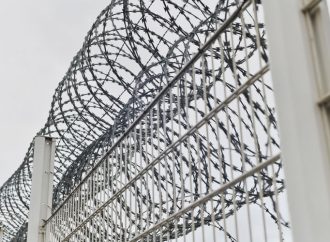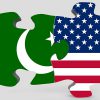Despite numerous agreements between India and Pakistan to preserve the sanctity of the Line of Control (LoC). India keeps violating the ceasefire line between the two states as it refuses to formalize the 2003 agreement. Reports regarding ceasefire violations by Pakistan and India are common in the news with both countries accusing each other of

Despite numerous agreements between India and Pakistan to preserve the sanctity of the Line of Control (LoC). India keeps violating the ceasefire line between the two states as it refuses to formalize the 2003 agreement. Reports regarding ceasefire violations by Pakistan and India are common in the news with both countries accusing each other of violence at the border.
The LoC is a 450 mile military control line between the Pakistani and Indian governed parts of Kashmir. The line has seen several ceasefire violations over the years. The LoC is the eventual legal outcome of the Chapters VI and VII framework under the UN Charter. Given the presence of the United Nations Military Observer Group in India and Pakistan (UNMOGIP), the legal basis and environment of the LoC are totally distinguishable from the Line of Actual Control (LAC).
Chapter VI of the UN Charter discusses the peaceful settlement of disputes. It requires countries who have disputes to first deal with them through ‘negotiations, enquiries, mediation, conciliation, arbitration, judicial settlements and regional agencies or any other peaceful means’. Chapter VII of the UN Charter talks about the UN Council’s powers regarding ‘the existence of any threat to peace, breach of the peace or any act of aggression’. It allows the Council to take military or non-military action to ‘restore international peace and security’.
The 1972 Simla Agreement also plays a key role in the creation of the LoC as it called for both sides to refrain from causing ceasefire violations. It also stated that neither side shall alter the line unilaterally, irrespective of mutual differences and varying legal interpretations.
The Line of Actual Control (LAC) on the other hand is a line which serves a border between India and China. While the line hasn’t seen any standoffs between the two states, China and India had a brawl in early May 2020. Now, the US Congress has passed a Defence Policy Bill asking China to cease aggression against India.
Both the countries have blamed each other for violating the ceasefire agreement. So, what is the ceasefire agreement, what does it say and does it still have any relevance after countless violations?
The first ceasefire agreement, the Karachi Agreement was signed in 1949 by both the countries following the 1947 Indo-Pak War. The Agreement called for the establishment of a ceasefire line in Jammu and Kashmir. The Agreement also stated that it was for military purposes and not for political purposes. The 1949 Agreement however seems to be redundant because India and Pakistan have already been at war in 1965 and in 1971 and have signed two different treaties. Repeated ceasefire violations are also a proof of the fact that the 1949 Agreement is now merely a piece of literature.
Another Ceasefire Agreement was agreed upon by the neighboring countries on a Tuesday night in 2003 after rising tensions at the border. The ceasefire was declared by Pakistan which was agreed upon by India two days later along the Line of Control (LoC), the international boundary and the Actual Ground Position Line in Siachen. This was a very important step by the two nuclear armed rivals to end what could be a very dangerous conflict.
Unfortunately, the Agreement is yet to be finalized according to a report by Al Jazeera. One analyst has defined the Agreement as more ‘symbolic’ rather than substantive.
Interestingly, in February 26 2021, Pakistan and India announced their commitment towards the 2003 ceasefire agreement to address the ‘core issues’ that would cause instability and unrest.
Both the sides have agreed to observe all agreements, understandings and cease firing strictly and have concurred on reviving the already existing mechanisms such as the hotline contract and flag meetings to deal with ‘unforeseen situations or misunderstanding’.
The Foreign Minister Shah Mehmood Qureshi called the agreement a ‘positive development’ and stated that the agreement is a good start for the future and maintained that Pakistan wants peaceful relations with its neighbours.The Indian Ministry of External Affairs made similar remarks by stating that India desires neighbourly relations with Pakistan. Whether the agreement gets formulized is a question yet to be answered.
In 2020, Pakistan claimed that India violated the ceasefire agreement 1,595 times. Previously in 2019, over 3,000 violations by India were reported. Deaths in ceasefire violations include soldiers as well as civilians. The 2003 agreement is merely the acceptance of an offer made by Pakistan. The agreement is not in a written form and there are no defined modalities or any Standard Operating Procedures (SOPs) regarding border management.
As the situation continues to become more and more dangerous, it is necessary for the Ceasefire Agreement of 2003 to be officially formalized. The Agreement, if ever formalized, should be free of ambiguity especially in terms of geographical markers. It is very important that the terms of the Agreement are agreed upon so that there is no confusion. It is important to specify the obligations of both India and Pakistan. Identification of permitted activities by the armed forces is also necessary. A complaint mechanism should also be adopted so that there is a platform to register a violation of the Agreement.
It is essential for India and Pakistan to have confidence in each other in order to make the Ceasefire Agreement work. Therefore, confidence building measures should be adopted which would build trust between the states and may pave way for friendlier diplomatic relations. Under the Karachi Agreement, both parties agreed not to deploy troops within 500 yards of the ceasefire line. This rule has been violated several times. The new Agreement should address the deployment of troops and should perhaps station troops in such a way that minimum damage is caused if a violation occurs.
Hence, in order to stop ceasefire violations which bring with it destruction and casualties, the leaders from both countries should make it one of their top priorities to formalize the 2003 Agreement in order to reduce the risk of future ceasefire violations.
- Has the US Learned From its Experience in Afghanistan? - July 20, 2022
- US’ Lawfare against Russia - May 16, 2022
- Is the US really behind the regime- change? - April 23, 2022














Leave a Comment
Your email address will not be published. Required fields are marked with *